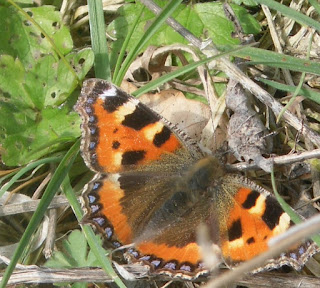 |
| Tadpoles. Very hungry tadpoles. It's time they got a place of their own... |
...back at the beginning of the year, I wrote about all the things I really wanted to create in my garden. One thing on the list was a wildlife pond. Well, we've gone and done it! With a lot of help from our lovely friends Mark and Caz, plus the neighbourhood kids, we've put together a very cute little pond.
It was so easy! The whole thing took a couple of weeks (off and on) and cost about the same as a tank of petrol (£55). If you'd like to make one for the same price, the dimensions are 250cm x 170cm, with a depth of just over 70cm.
H and I have also been looking after some extremely hungry tadpoles; this pond will be their new home. We're very excited and can't wait for relocation day. I'll do another update when I put the edging in and create other features like a marsh and beach.
Pond Conservation are a national charity dedicated to the protection and creation of freshwater habitats for wildlife. Find out more about them at http://www.pondconservation.org.uk/
I've downloaded their free book "Creating Garden Ponds for Wildlife", which should give me a good idea about how to plant up the pond and manage it in the future.
















